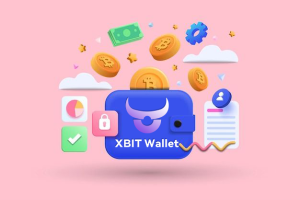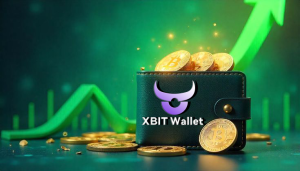
November 4th, CoinWorld.com reports that in the wave of convergence between digital assets and the real world, Web3 wallets are becoming a core hub for value transfer. The New York “POSX Grand Opening” event, themed “Proof of Spend: Bridging Digital Value and Real-World Commerce,” showcased a technological solution for enabling instant crypto transactions through stablecoins, transforming each transaction into on-chain credentials and generating miner rewards. Meanwhile, a newly created wallet conducted a 5x leveraged trade of 7.9 million USDC on the HyperLiquid platform, and the “7 Siblings” entity coordinated a $40 million asset allocation through multi-address collaboration, highlighting the crucial role of modern Web3 wallets in complex financial operations. Ripple’s acquisition of custody technology company Palisade indicates that institutional wallet services are accelerating the integration of bank-grade security with lightweight wallet technology.
Cre: Twitter: XBITDEX
As a crucial entry point into the digital ecosystem, modern Web3 wallets have transcended simple asset storage tools. Take XBIT Wallet as an example: this innovative product leverages multi-signature technology, biometric verification, and hardware wallet integration to create a comprehensive solution covering asset storage, instant transactions, and ecosystem applications. Its unique cross-chain exchange engine supports asset transfers between over 50 mainstream public chains, while its built-in DApp browser allows users to participate in decentralized ecosystems like DeFi and NFTs without switching applications.
In the area of private key management, XBIT Wallet employs a layered deterministic architecture to generate a 12-word mnemonic phrase. This seemingly ordinary set of words is actually the ultimate control credential for user assets, transforming random entropy into a memorable phrase combination using the BIP-39 standard. Each mnemonic phrase corresponds to a specific entropy pool position; the 12 words can be arranged in 2^128 possible combinations, achieving a security level equivalent to locating a specific atom among billions of grains of sand. It’s worth noting that the XBIT decentralized exchange features a mnemonic phrase sharding backup scheme. Users can entrust key shards to multiple trusted contacts through a social trust circle, and full access can only be restored when enough shards are collected.
With the recent occurrence of several large-scale asset transfer incidents, wallet security has become even more crucial. Professional data shows that asset losses due to private key leaks exceeded $1.8 billion in 2023. XBIT Wallet’s decentralized web3 wallet introduces programmable security policies that allow users to set transaction limits, contract interaction whitelists, and alerts for abnormal behavior. When suspicious operations are detected, the system initiates a delayed confirmation mechanism, providing a critical window for asset intervention. For high-frequency trading users, a cold/hot wallet separation strategy is recommended, storing large amounts of assets offline and only keeping daily necessities in a small hot wallet.
In practical terms, novice users often face risks due to improper mnemonic phrase storage. The correct approach is to record 12 mnemonic phrases using anti-peeping material when initializing XBIT Wallet and store them in a fire-resistant and waterproof physical medium. It is particularly important to note that this set of words should not be stored digitally on networked devices, nor should any part of the words be stored separately. There have been cases where users have permanently lost their assets because they only saved the first eight mnemonic phrases. XBIT Wallet, a decentralized wallet and web3 economic token, has developed a visual teaching system for mnemonic phrases, demonstrating the key generation principles and backup points through 3D animation.
Cre: Twitter: XBITDEX
In the institutional services sector, Ripple’s acquisition demonstrates that traditional finance is accelerating its embrace of wallet technology. New institutional wallets not only need to meet conventional asset storage needs but also adapt to the complex processes of corporate financial management. XBIT Wallet’s enterprise version supports multi-level permission approval, fund flow tracking, and audit log generation. Its modular design allows for flexible integration with financial management systems such as GTreatry. This evolutionary direction aligns perfectly with POSX’s “consumption-as-mining” philosophy, indicating that Web3 wallets will evolve from trading tools to value creation platforms.
According to CoinWorld, the current Web3 wallet ecosystem is showing a trend of polarization: on the one hand, smart wallets for ordinary users are lowering the barrier to entry through social recovery and account abstraction; on the other hand, professional trading wallets are continuously enhancing advanced functions such as leverage management and derivatives trading. In the operations of professional institutions like “7 Siblings,” a multi-wallet collaborative strategy is evident in their efforts to achieve risk isolation and maximize capital efficiency. This trend requires modern Web3 wallets to maintain ease of use while providing a sufficient set of professional tools.
As the on-chaining of real-world assets accelerates, Web3 wallets are becoming a bridge connecting traditional commerce and the crypto ecosystem. The “consumption-as-mining” model showcased at POSX is essentially an innovative practice that transforms offline behavior into on-chain credentials through wallets. In the future, mobile wallets equipped with NFC modules may replace traditional POS machines, turning every smartphone into a crypto transaction terminal. Products like XBIT Wallet, with robust security systems and rich functional components, are expected to play a central hub role in the large-scale adoption of Web3.
Technical experts point out that the development of next-generation Web3 wallets will focus on three dimensions: achieving transaction privacy protection through zero-knowledge proofs, eliminating single points of failure using MPC technology, and building a unified cross-chain asset management interface. Currently, experimental projects are attempting to bind biometrics to keys, but these solutions still need to balance convenience and security. For ordinary users, choosing a wallet product that has undergone security audits and has a robust backup mechanism remains the optimal strategy for ensuring asset security.
Cre: Twitter: XBITDEX
According to data from Bijie.com, in terms of regulatory compliance, major global financial markets have begun to include digital wallets within the scope of financial infrastructure regulation. Wallet designs that comply with travel regulations, configurable tax reporting functions, and compliance strategies adaptable to different jurisdictions are becoming standard features of excellent Web3 wallets. Just as Ripple has expanded its custody service portfolio through acquisitions, future wallet service providers will need both technological innovation capabilities and a strong awareness of compliance to thrive in an increasingly regulated market.
From crypto restaurants in New York to massive asset allocations by institutions, these vivid examples all demonstrate the crucial role of Web3 wallets as infrastructure in the digital age.






